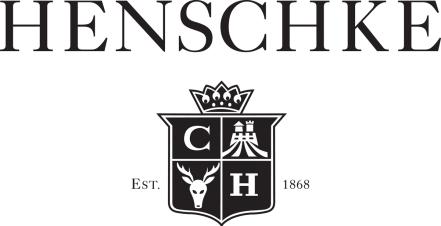Henschke
Cyril Henschke Cabernet Sauvignon
Henschke
Cyril Henschke Cabernet Sauvignon
This wine carries the name of Stephen’s father, Cyril Henschke (1924-1979), as a tribute to one of Australia’s outstanding winemaking pioneers, renowned for old-vine single-vineyard and quality varietal table wines. Cyril planted cabernet sauvignon at Henschke’s Eden Valley vineyard in the 1960s.
Wine Production
Cabernet was a standout variety showing great purity and spice, colour, intensity and strikingly mature tannins. Yields were average with exceptional overall quality. Matured in 38% new and 62% seasoned French oak hogsheads for 18 months prior to blending and bottling.
Tasting Notes
Deep crimson with crimson red hues. Concentrated and complex aromas of cassis, black and red currants, blackberry leaf and violets with underlying savoury nuances of crushed dried herbs, beef stock, cigar box and anise spice, all supported by dark cedary French oak. A flood of rich blackberry and bright red currants greet the palate, which is precisely defined by purity of acidity, an elegant structure and layers of long, silky fine-grained tannins that provide great persistence.
Food Pairing
Wagyu Rump Cap with Crispy Tofu Pickled Radish and Eel Sauce
This wine carries the name of Stephen’s father, Cyril Henschke (1924-1979), as a tribute to one of Australia’s outstanding winemaking pioneers, renowned for old-vine single-vineyard and quality varietal table wines. Cyril planted cabernet sauvignon at Henschke’s Eden Valley vineyard in the 1960s.
Wine Production
Cabernet was a standout variety showing great purity and spice, colour, intensity and strikingly mature tannins. Yields were average with exceptional overall quality. Matured in 38% new and 62% seasoned French oak hogsheads for 18 months prior to blending and bottling.
Tasting Notes
Deep crimson with crimson red hues. Concentrated and complex aromas of cassis, black and red currants, blackberry leaf and violets with underlying savoury nuances of crushed dried herbs, beef stock, cigar box and anise spice, all supported by dark cedary French oak. A flood of rich blackberry and bright red currants greet the palate, which is precisely defined by purity of acidity, an elegant structure and layers of long, silky fine-grained tannins that provide great persistence.
Food Pairing
Wagyu Rump Cap with Crispy Tofu Pickled Radish and Eel Sauce
Brand Materials
Vineyard & Production Info
Winemaking & Aging
About the Vineyard
The La Niña pattern weakened during the lead-up to the 2012 vintage, resulting in below average winter and spring rainfall. July was the driest since the serious drought of 2003. Spring was mild with few frost events; however, flowering and fruit set were affected by wet drizzly weather in mid to late November, leading to only average yields. Summer was also surprisingly mild with below average temperatures from southerlies off the ocean in January and only two short heat events, at New Year and at the end of February. This provided for slow ripening which allowed for intense fruit flavours, high colour figures, high acidity and mature tannins




